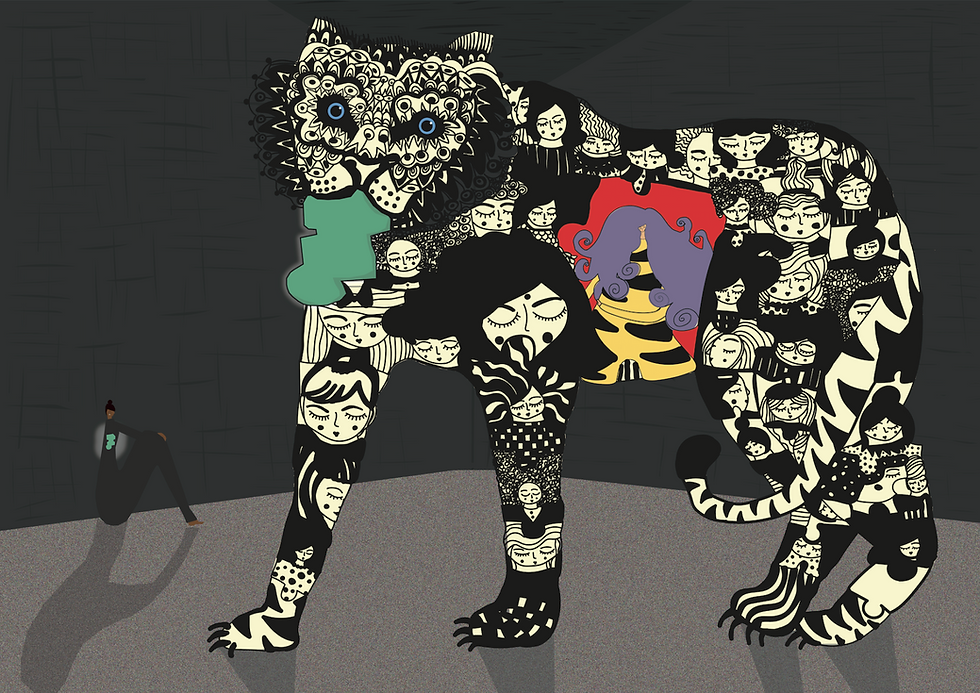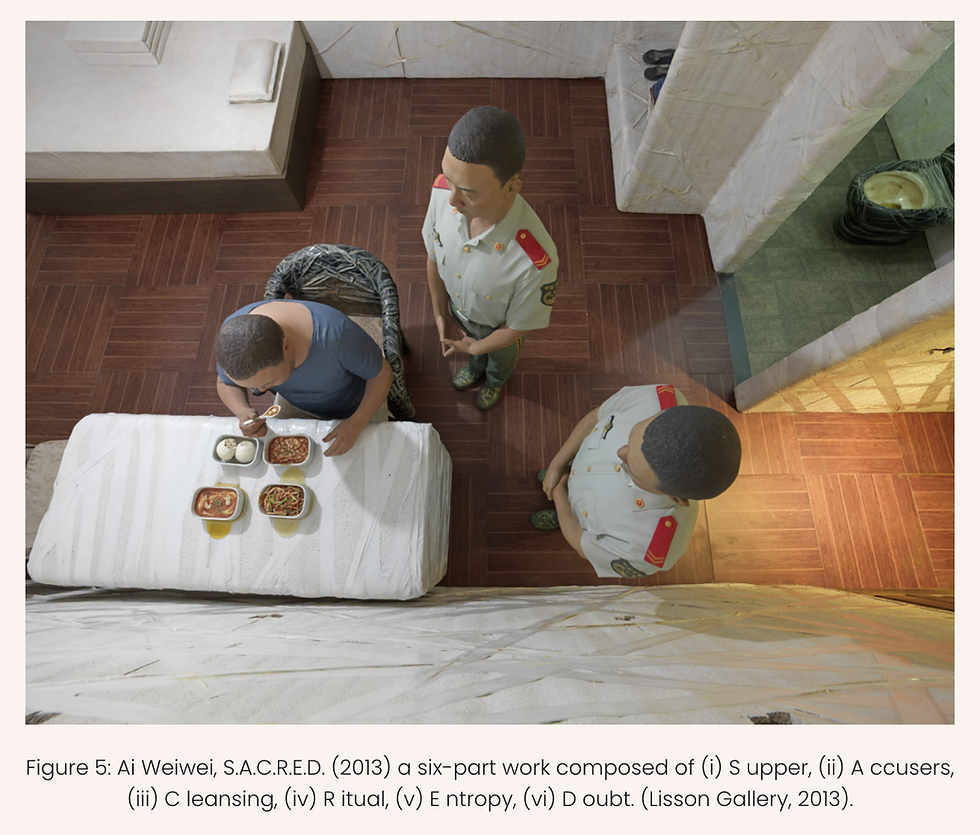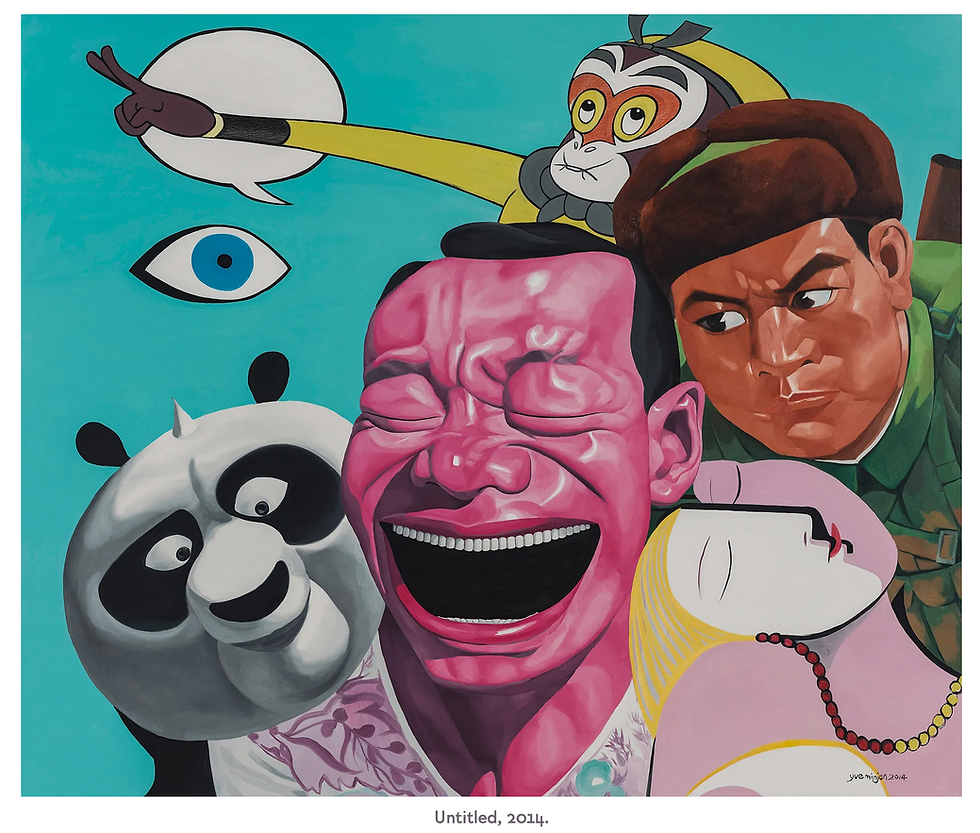Making Some Small Progress on the Research Paper Draft II
- Madeleina Kay
- Aug 26, 2024
- 5 min read
Overly conscious that the second draft of our research paper (2,500 words) is due in September, I decided to make some headway over the Bank Holiday weekend. Rather unhelpfully I had an unexpected hospital trip on Friday afternoon and have been feeling rather unwell most of the weekend, but I persevered as best I could.

I've spent most of the summer reading as much as possible around the topic which I am exploring, and I still have a rather hefty stack of books to get through. With the larger, more academic books, I am practicising skim-reading techniques, so as to try and find the relevant information as efficiently as possible. I have bought a lot of packs of sticky tabs and I've been religiously typing up quotes on my blog. I've also been googling artists whose work may be relevant to my research topic and finding academic articles about their work or published interviews with the artists - and saving the links in a note.
I've been struggling with writing anything, since I still have so much to read and it is not yet clear in my mind what it is what I want to say. Although, I appreciate that the writing process itself will help to clarify that. I decided to start by going through all of the relevant blog posts, re-reading the quotes I had typed up and deciding which were most relevant to my research topic - I then copy & pasted them into a word document. I then re-read them another time and highlighted in yellow only the most pertinent sentences.
Afterwards I reviewed the links in my notes and read through the articles and interviews I had found. I decided that four out of five of the artists I had identified were worth including (along with the work of other artists I had included in my first draft); Ai Wei Wei, Yue Minjun (on Chinese Thought Reform), Jen Kiaba (on Cults) and Veronica Rowlands (on narcissistic domestic abuse).
I also reviewed an interesting research study conducted at a conference for cult survivors; 'Flowing towards freedom with multimodal creative therapy: The healing power of therapeutic arts for ex cult-members'.
I didn't manage to start writing up any analysis yet, but at least I have reviewed and collated the eclectic material into one document - so, I can start to think about how I piece together my argument. I've got to take some long train journeys over the next two weeks, so it was certainly useful to get all the material "offline" and into a document I can work on when the train WiFi is inevitably failing to work.
Artists of Interest
Veronica Rowlands
'In November 2020 I was awarded an Arts Council England grant enabling me to create a body of work to explore and raise awareness of Narcissistic abuse.
The grant gave me funding to deliver a series of workshops across the London boroughs of Newham and Greenwich to abuse sufferers, young people who are at high risk of being abused and to adults who are in recovery/shelters.' - Veronica Rowlands

'One of the final pieces on display saw the motif of the tiger once again, but this time the tiger's body was built up of the faces of his previous victims and relationships. This piece was designed to reflect how even once the abuse is over, after the relationship has ended, the narcissist may still hold a part of their victim within them. The narcissist is depicted as a cumulation of their prior relationships; as if the narcissistic abuser is a tapestry of the individuals they have victimised throughout their life.' - British Psychology Society

Rowlands said: 'The textile installations are weighted blankets, acting as a metaphor for the depth of internal conflict for those experiencing psychological abuse – the restrictive nature of a narcissistic relationship but also the warmth and comfort that remaining within the confines of the relationship can bring.'
Ai Wei Wei

'His art explores a variety of topics, ranging from Chinese oppression, which led to his imprisonment, to broader global issues such as the refugee crisis and migration (Cheng, 2011; Schilling, 2016).'
'The sunflower seeds in the piece symbolize the life of the artist and his connection to his homeland. This symbolism draws on the historical significance of the sunflower during China's Cultural Revolution in the 1960s and 70s (Bingham, 2010; Holt, 2012). In this masterpiece, Ai Weiwei explained that the sunflower's orientation toward the red sun serves as a symbol reflecting the sentiments of the masses toward their leadership (Bingham, 2010).' - Jstor

After becoming even more popular than ever before, Ai Weiwei began creating pieces that condemned the actions of the Chinese government during his imprisonment (Holt, 2012). One of the most significant works from this period is S.A.C.R.E.D., an installation divided into six parts depicting scenes of his incarceration (Lucas, 2015; Weiwei, 2013). Each letter in the title corresponds to a specific aspect: Supper, Accusers, Cleansing, Ritual, Entropy, and Doubt (Callahan, 2021; Weiwei, 2013). Small apertures in each box allow viewers to peer inside (Callahan, 2021; Lucas, 2015). Weiwei meticulously recreated realistic models of himself and his captors, documenting every detail. The purpose of this exhibition was to document and illustrate the conditions of his imprisonment (Lucas, 2015; Weiwei, 2013). Each room portrays mundane activities, offering the public a profound understanding of the depicted scenes (Lucas, 2015). - By Arcadia
Yue Minjun

'Born in the year 1962 in the bustling city of Daqing, China, Yue Minjun’s fascination with art had been a constant in his life following him through the turbulent waters of revolutionary China. It was the human rights violations and political repressions he faced during his upbringing that truly shaped his relationship with the medium and its power to truly, and comically, convey his lived experience.'
'I have experienced rapid changes in China, and these changes have affected the way I look at things. I must be eclectic, respect my own life experience, and express this uniqueness, so my creation also revolves around myself, I paint myself, I paint myself how I laugh at everything about myself, culture and history.' - Metal Magazine

'In my ongoing project Burdens of a White Dress, I use self-portraits to explore what it means to leave an identity, a culture, a language and a family behind. As a woman brought up in the Unification Church, commonly remembered as the Moonies cult, the only things that mattered were for me to consent to an arranged marriage and to bear “blessed children.” At twenty, after being forced to marry a stranger, I finally fought my way out.'
“I filled up my sketchbooks with my turmoil. I couldn’t [speak] my feelings because they were so outrageous, no one in the church could accept them. I couldn’t use words. I would show anyone my sketchbook. I would pass my books around so people knew how I felt. It was my only way of communicating, I felt like a mute.” - Jen Kiaba

Comments